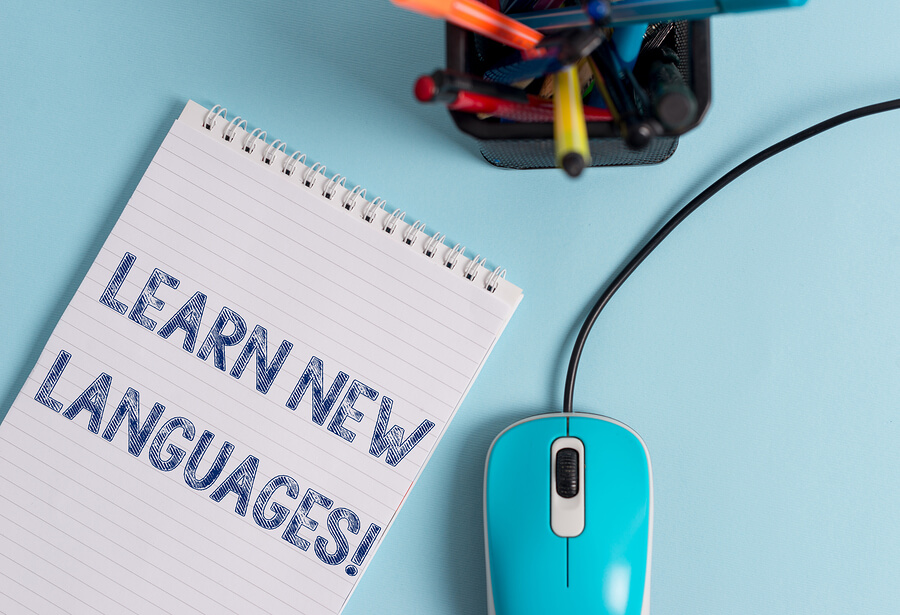Three months is sometimes the time frame put on learning a new language. Some people say that new learners put this time limit as that is the standard length of a visitor visa to many countries. This is often when many people choose to study a new language. Also, the restricted time given on a visa sets a deadline for learning the new language which may keep some people motivated to learn the language as quickly as possible.
Factors Determining the Time for Learning a New Language
Learning a language depends on two key factors which are
- the learner’s attitude; and
- the time set to learn the language available.
Discipline is one of the main factors as learning any new language requires disciplining oneself to study. It is not only your dedication but also the time set aside for the work that needs to be done to become fluent in the language. There is no hard and fast timeframe that dictates how to learn a new language fast. However, there are some guidelines that have been set by the U.S. Foreign Service Institute (FSI) which conveniently divides languages into groups showing the difficulty to learn for those who speak English:
Group 1:
Italian, German, French, Indonesian, Portuguese, Spanish, Romanian and Swahili
Group 2:
Burmese, Bulgarian, Hindi, Greek, Urdu and Persian
Group 3:
Lao, Cambodian, Amharic, Czech, Thai, Hebrew, Finnish, Hungarian, Vietnamese, Polish, Serbo-Croatian, Russian, Turkish
Group 4:
Chinese, Arabic, Korean, Japanese
The FSI Describes 5 Proficiency Levels as Follows:
- Elementary proficiency is when a speaker is able to speak enough of the language to communicate when travelling in relation to courtesy requirements.
- Restricted working proficiency is when the speaker can satisfy the language requirements for day to day interactions but not for work requirements.
- Minimal professional proficiency is when the speaker can communicate in the language with enough structural accuracy and sufficient vocabulary in order to be to take part effectively in the majority of informal and formal conversations related to social, practical as well as professional topics.
- Complete professional proficiency means the speaker can accurately match the language requirements required for use in professional situations.
- Bilingual or native proficiency is when the speaker is able to speak the language as if s/he were a native speaker.
FSI research found that learning a new language takes 480 hours to achieve basic fluency in the first group of languages and 720 hours for the second to the fourth group of languages. This simplified means if a learner puts in ten hours per day learning a language maybe by using resources to learn a language online by choosing one of the many online language courses it will take 48 days to reach basic fluency.
For the harder to learn languages it would take 72 days. One would assume that the average learner would not be able to work 10 hours a day without a break for 48 and 72 days so allowing for time off it would take around two months for the easier languages and three months for the more difficult languages. Of course, if you put in just five hours per day the time would be doubled to reach a basic level of fluency.
Sample Day for How to Learn a New Language Fast
| Hours | Activity |
| 8-12 | Listening recordings, reading and learning new vocabulary |
| 12-2 | Break but still engaged in listening to the new language |
| 2-3 | Learning new grammar |
| 3-4 | Practise writing the new language |
| 4-5 | Speaking practice either using Skype or talking with locals if possible |
| 5-7 | Relaxation time |
| 7-10 | Relaxing but engaged in the language by watching or going to the movies, listening to songs, or engaging with friends who speak the new language |
Immersing in a language is easier than it has ever been as you don’t necessarily have to go to the country where the language is spoken you can engage with online courses, chat rooms and social media in order to get the exposure you need to gain fluency in a new language. If you want to go from level 2 onto level 4 it is going to take a lot longer and a lot more dedication than the level 2 so you have to keep up your 10 hourly daily routines wherever you are.
One of the key failings of language learning is not getting sufficient oral practice to back up the theory you have learned. Fortunately, there are so many online resources you can download to help you learn the language online such as videos and podcasts which you can use in any way you choose but it is a useful way of learning a new language as well as paying for online language courses. You will see the benefits of learning a new language unfold as you become more proficient.




















